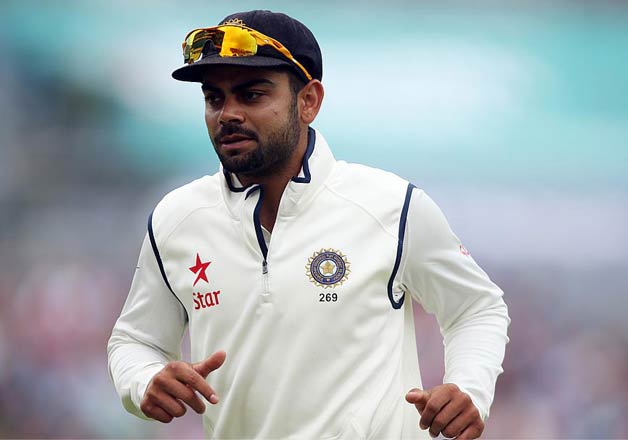
India have not played a Test series at home for almost two years. Their last 16 Tests were all overseas. Now, when they finally get the luxury of a home series, a formidable foe awaits.
South Africa are one of the few teams to have perfected the art of playing away from home. They haven't lost an away Test series in nine years. That makes for an intriguing match-up and it's not easy to predict the outcome with certainty.
But we're going to stick our necks out and pick India as the winner. Here's why!
Virat Kohli's captaincy

In his first full Test series as captain, Virat Kohli led India to their first series victory in Sri Lanka in 22 years. This was after the morale-shattering result in the first Test in Galle where India snatched defeat from the jaws of victory.
But India showed a never-say-die spirit to come from behind and win the Test series 2-1. Much of the credit should go to Kohli whose aggressive approach rubbed off on the rest of the players. Sometimes the aggression crossed the line, resulting in Ishant Sharma being banned for the Mohali Test, but the bottomline is that India won the series.
Also, while captaincy has affected the batting of many great players, Kohli's batting has on the contrary thrived under the additional responsibility.
R Ashwin

Virat Kohli has called R Ashwin the go-to man. The South Africans regard him as the dangerman. It's clear that the outcome of the series will depend in large part on his performance.
Ashwin's side strain during the ODI series adversely affected India's chances but he is now fit and raring to go. The fastest Indian to reach 50 & 100 Test wickets, the off spinner is just five short of 150 wickets and is likely to be the fastest to that landmark as well.
Of course he will require support and Amit Mishra is an able foil. Their spin partnership worked wonders in Sri Lanka and they are more than capable of recreating the same magic at home.
The five bowler combination

Batsmen can save matches but only bowlers can win them since you need to take 20 wickets. The five bowler combination was a key factor in India's success in Sri Lanka.
It allowed Ishant Sharma to go flat out in short bursts and it also gave the bowling attack more variety.
Stuart Binny was the fifth bowler in Sri Lanka but Ravindra Jadeja is likely to replace him here as India go in with a three-man spin attack. Jadeja has been in sensational form in the Ranji Trophy, taking 38 wickets in four matches so far.
And he is also a handy batsman down the order especially in these conditions. As everyone knows, he has three first class triple centuries!
The Indian pitches

Am ugly controversy erupted at the Wankhede Stadium during the fifth ODI after the pitch curator, Sudhir Naik, inexplicably prepared a batting featherbed despite instructions to the contrary.
The Indian team director Ravi Shastri lost his cool and curators across the country will now think twice before going against the team's diktat. All the pitches are likely to turn sooner rather than later and South Africa's Faf du Plessis even said that the visitors expect the wickets to turn from Day 1.
Asked if India would play three spinners, Shastri retorted that India could play four spinners if the pitches were sufficiently helpful. There's only one team that can benefit in such a scenario and it's not South Africa.
South Africa's mediocre spin attack

The Indian batsmen are not necessarily masters of spin bowling, as Rangana Herath and Tharindu Kaushal showed in the Galle Test earlier this year. But, unfortunately for South Africa, while they have some terrific batsmen and fast bowlers, their Achilles heel is spin bowling.
There are three spinners in the South African squad - off spinners Dane Piedt and Simon Harmer and leg spinner Imran Tahir - but none of them is likely to make the Indian batsmen lose any sleep.
Tahir, who is the most experienced of the troika, has a great record in ODIs but has struggled to replicate the same form in Tests, where he averages a poor 46.39. That leaves too much of a burden on Dale Steyn and Morne Morkel who are unlikely to run through the Indian line-up on pitches shorn of grass.

















